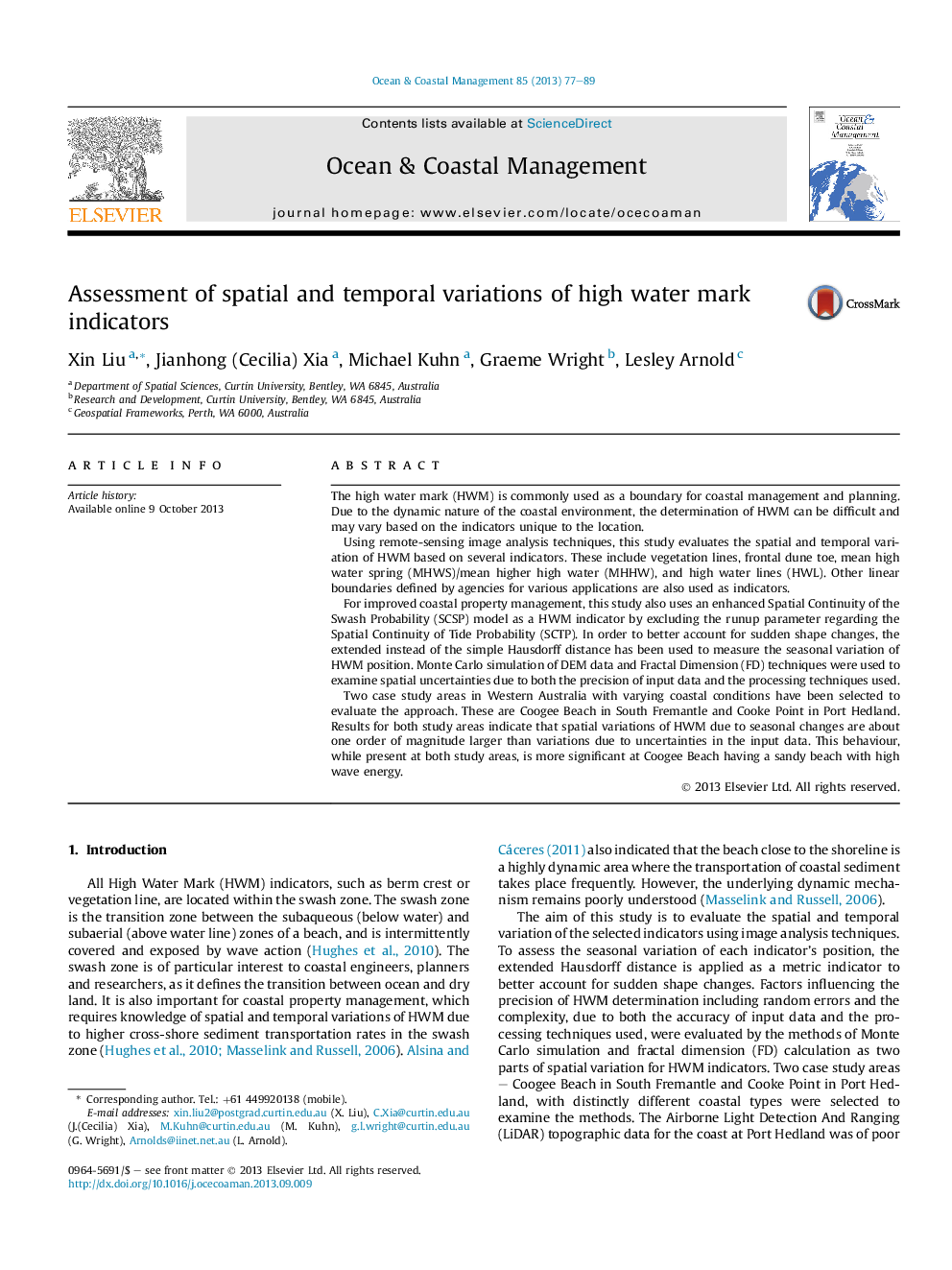| کد مقاله | کد نشریه | سال انتشار | مقاله انگلیسی | نسخه تمام متن |
|---|---|---|---|---|
| 1723807 | 1014824 | 2013 | 13 صفحه PDF | دانلود رایگان |

• We examine the tempo-spatial variation of high water mark (HWM) based on several indicators using image analysis.
• The seasonal variation contributes almost one order of magnitude larger, than the general variation of HWM indicators.
• The dune toe line is the best HWM position in terms of the small variation over both time and space.
• The variations of HWM position in two seasons were measured using the extended Hausdorff distance.
• Random errors and the complexity of HWM, were assessed using Monte Carlo simulation and fractal dimension, respectively.
The high water mark (HWM) is commonly used as a boundary for coastal management and planning. Due to the dynamic nature of the coastal environment, the determination of HWM can be difficult and may vary based on the indicators unique to the location.Using remote-sensing image analysis techniques, this study evaluates the spatial and temporal variation of HWM based on several indicators. These include vegetation lines, frontal dune toe, mean high water spring (MHWS)/mean higher high water (MHHW), and high water lines (HWL). Other linear boundaries defined by agencies for various applications are also used as indicators.For improved coastal property management, this study also uses an enhanced Spatial Continuity of the Swash Probability (SCSP) model as a HWM indicator by excluding the runup parameter regarding the Spatial Continuity of Tide Probability (SCTP). In order to better account for sudden shape changes, the extended instead of the simple Hausdorff distance has been used to measure the seasonal variation of HWM position. Monte Carlo simulation of DEM data and Fractal Dimension (FD) techniques were used to examine spatial uncertainties due to both the precision of input data and the processing techniques used.Two case study areas in Western Australia with varying coastal conditions have been selected to evaluate the approach. These are Coogee Beach in South Fremantle and Cooke Point in Port Hedland. Results for both study areas indicate that spatial variations of HWM due to seasonal changes are about one order of magnitude larger than variations due to uncertainties in the input data. This behaviour, while present at both study areas, is more significant at Coogee Beach having a sandy beach with high wave energy.
Journal: Ocean & Coastal Management - Volume 85, Part A, December 2013, Pages 77–89